Top 5 Amazing Tarantula Breeds
Tarantulas, with their captivating appearance and intriguing behaviors, have become increasingly popular pets for arachnid enthusiasts around the globe. These fascinating creatures offer a unique opportunity to observe the wonders of the invertebrate world up close. But with so many different types, knowing which tarantula breeds are the most amazing can be challenging. This guide will explore the top 5 most amazing tarantula breeds, delving into their characteristics, care requirements, and the unique qualities that make them stand out in the world of tarantulas. From the docile Chilean Rose to the vibrant Cobalt Blue, we’ll discover what makes these breeds so special.
The Chilean Rose Hair Tarantula
The Chilean Rose Hair Tarantula (Grammostola rosea) is often the first choice for many beginner tarantula keepers. They are known for their gentle nature and relatively low maintenance requirements. Their striking appearance, featuring a combination of brown and pinkish hairs, adds to their charm. Native to the arid regions of Chile, these tarantulas thrive in a dry environment, making them easy to accommodate in a home setting. Their docile temperament makes them easier to handle compared to other more aggressive species, although it’s always wise to exercise caution. They grow to a moderate size, making them manageable for those new to tarantula care, and they’re known to be relatively long-lived, sometimes reaching over 20 years, making them a rewarding companion for many years to come. (Image: Chilean Rose Hair Tarantula)
Appearance and Characteristics
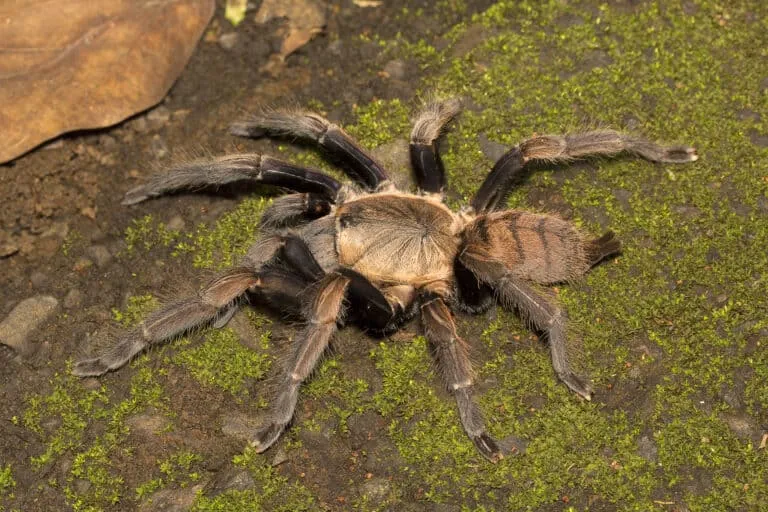
The Chilean Rose Hair Tarantula showcases a beautiful combination of earthy tones. Their bodies are primarily a dark brown or reddish-brown hue, complemented by long, pinkish hairs that give them a delicate, rose-like appearance, hence the name. They have a robust build and are medium-sized, with females typically reaching a leg span of about 5-6 inches. The males are slightly smaller and have a more slender build. Their overall look is quite striking and can be a highlight of any pet collection. As they mature, the colors deepen, enhancing their visual appeal. (Image: Close up of Chilean Rose Hair Tarantula)
Temperament and Handling
One of the most appealing aspects of the Chilean Rose Hair Tarantula is its generally docile temperament. They are known for being quite laid-back and are less likely to display aggressive behaviors compared to other tarantula species. However, while they can be handled, it’s important to approach them with caution. Tarantulas can be skittish, and even a docile species may react defensively if they feel threatened. Handling should always be done gently and close to the ground to minimize the risk of injury if the tarantula were to fall. Regular interaction should be avoided, as this can stress the spider. Observe them at a safe distance to fully appreciate their behavior and beauty. (Image: Person handling a Chilean Rose Hair Tarantula)
Care and Habitat
Caring for a Chilean Rose Hair Tarantula is relatively straightforward, making them an excellent choice for beginners. They thrive in a terrestrial setup with a dry substrate, such as coconut fiber or peat moss. The enclosure should be large enough to accommodate their size, and it should include a hide, such as a piece of cork bark or a hollow log, where they can retreat and feel secure. The temperature should be kept around 70-80°F (21-27°C), and humidity levels should be moderate, with a water dish always available for hydration. Feeding should consist of appropriately sized insects, such as crickets or mealworms, offered once or twice a week, depending on the tarantula’s age and appetite. (Image: Chilean Rose Hair Tarantula habitat)
The Mexican Red Knee Tarantula
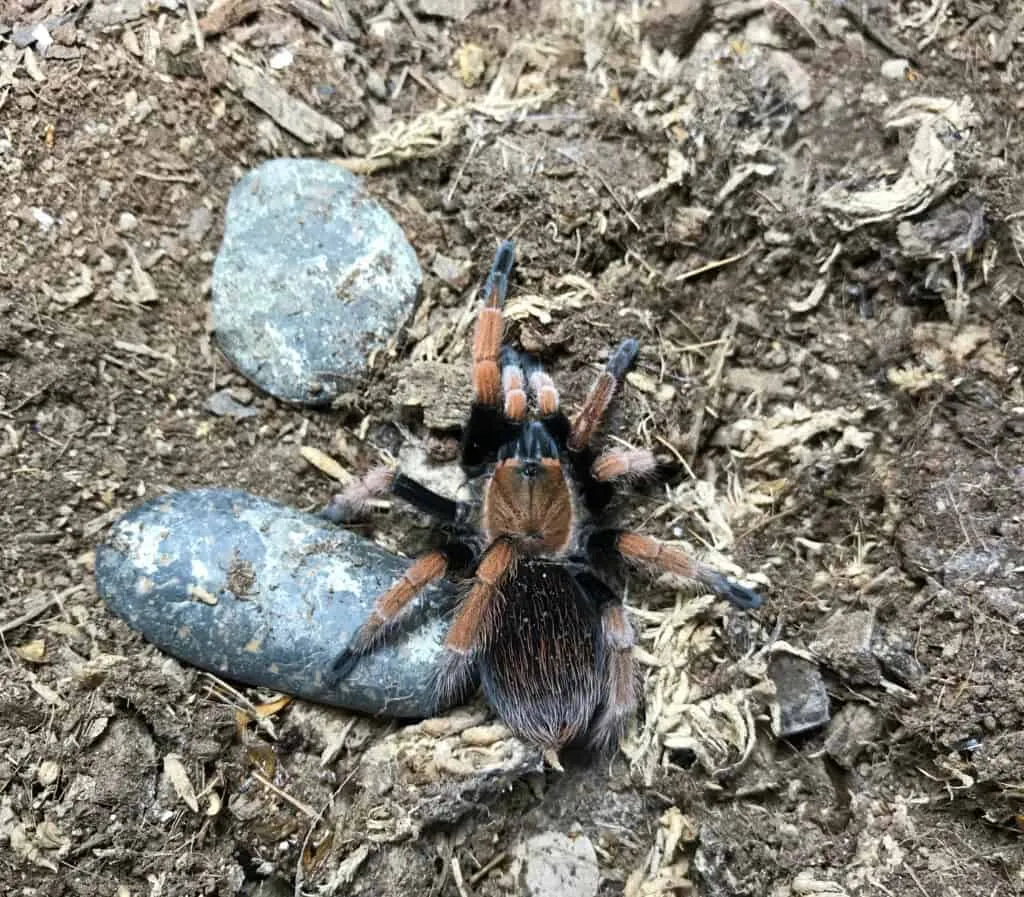
The Mexican Red Knee Tarantula (Brachypelma hamorii) is another popular choice for pet owners, thanks to its striking appearance and relatively manageable temperament. Famous for its distinctive red-orange markings on its leg joints, this species adds a touch of vibrant color to any collection. They are known for their somewhat slower growth rate and a generally docile disposition, making them relatively easy to handle, but they do have urticating hairs. The Mexican Red Knee is a terrestrial species that is native to the Pacific coast of Mexico. (Image: Mexican Red Knee Tarantula)
Appearance and Characteristics
The Mexican Red Knee Tarantula is truly a sight to behold, with its iconic red-orange markings that adorn the joints of its legs, contrasting beautifully against its black body and legs. The carapace (the top part of the body) is usually a deep black, and the abdomen is covered in dark hairs. They are a medium-sized species, with females growing to a leg span of about 5-6 inches. Their striking appearance is a highlight in any collection, and their contrasting colors make them instantly recognizable and visually appealing. As they mature, the colors become even more pronounced, adding to their beauty. (Image: Close up of Mexican Red Knee Tarantula)
Temperament and Handling
Mexican Red Knee Tarantulas are generally known for their docile temperament, but like all tarantulas, they can be skittish. They are less likely to bite, but they have urticating hairs on their abdomen, which they can flick towards perceived threats. These hairs can cause skin irritation, so it’s always best to handle them with caution and avoid direct contact. If you do handle them, do so gently and from a low height to minimize the risk of injury. It is important to recognize their individual personalities, as some are calmer than others. (Image: Person handling a Mexican Red Knee Tarantula)
Care and Habitat
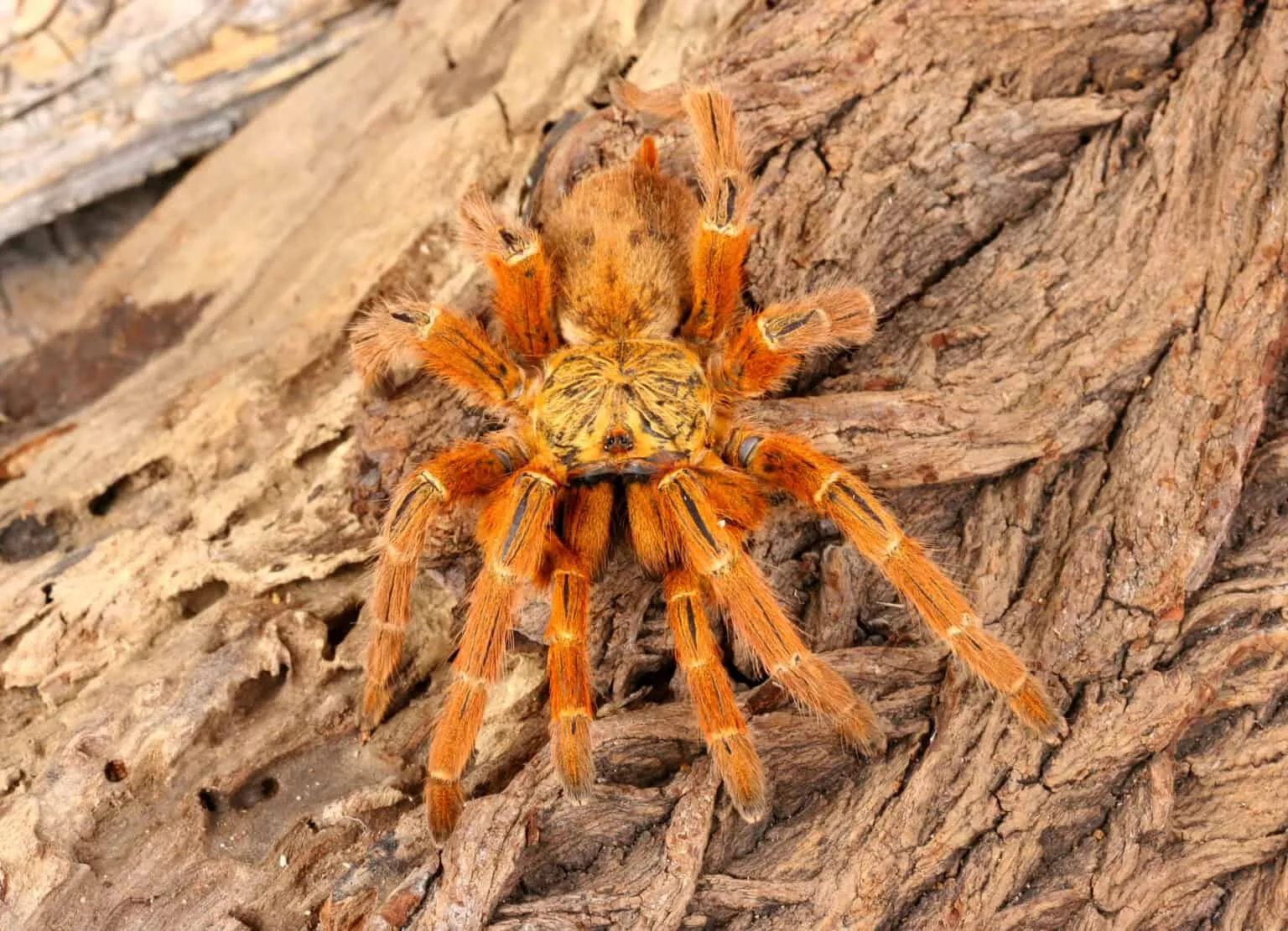
Caring for a Mexican Red Knee Tarantula involves providing a suitable habitat and maintaining proper environmental conditions. They require a terrestrial enclosure with a dry substrate like coconut fiber or peat moss, which they use for burrowing. A hide, such as a piece of cork bark or a hollow log, is essential for providing security. The temperature should be maintained between 75-85°F (24-29°C), and humidity levels should be kept relatively low, around 60-70%. A shallow water dish is necessary for drinking. Feeding should consist of appropriately sized insects, such as crickets or mealworms, offered once or twice a week, depending on the tarantula’s age and appetite. (Image: Mexican Red Knee Tarantula habitat)
The Brazilian Black Tarantula
The Brazilian Black Tarantula (Grammostola pulchra) is a stunning tarantula known for its entirely black coloration. Their sleek appearance and relatively docile temperament make them a popular choice for experienced tarantula keepers. They are a terrestrial species, and their care requirements are relatively straightforward, making them a rewarding species for those who have experience with other tarantulas. They are native to the grasslands and forests of southern Brazil, and their imposing size and beautiful coloration make them a striking addition to any collection. (Image: Brazilian Black Tarantula)
Appearance and Characteristics
The Brazilian Black Tarantula is immediately recognizable by its velvety black coloration, which covers its entire body, including the legs, carapace, and abdomen. This uniform black appearance gives them a sleek and elegant look. They are a medium to large-sized species, with females growing to a leg span of up to 6-7 inches. Their overall appearance is quite imposing, and their striking color makes them a beautiful specimen to observe. As they mature, their color deepens, enhancing their visual appeal. (Image: Close up of Brazilian Black Tarantula)
Temperament and Handling
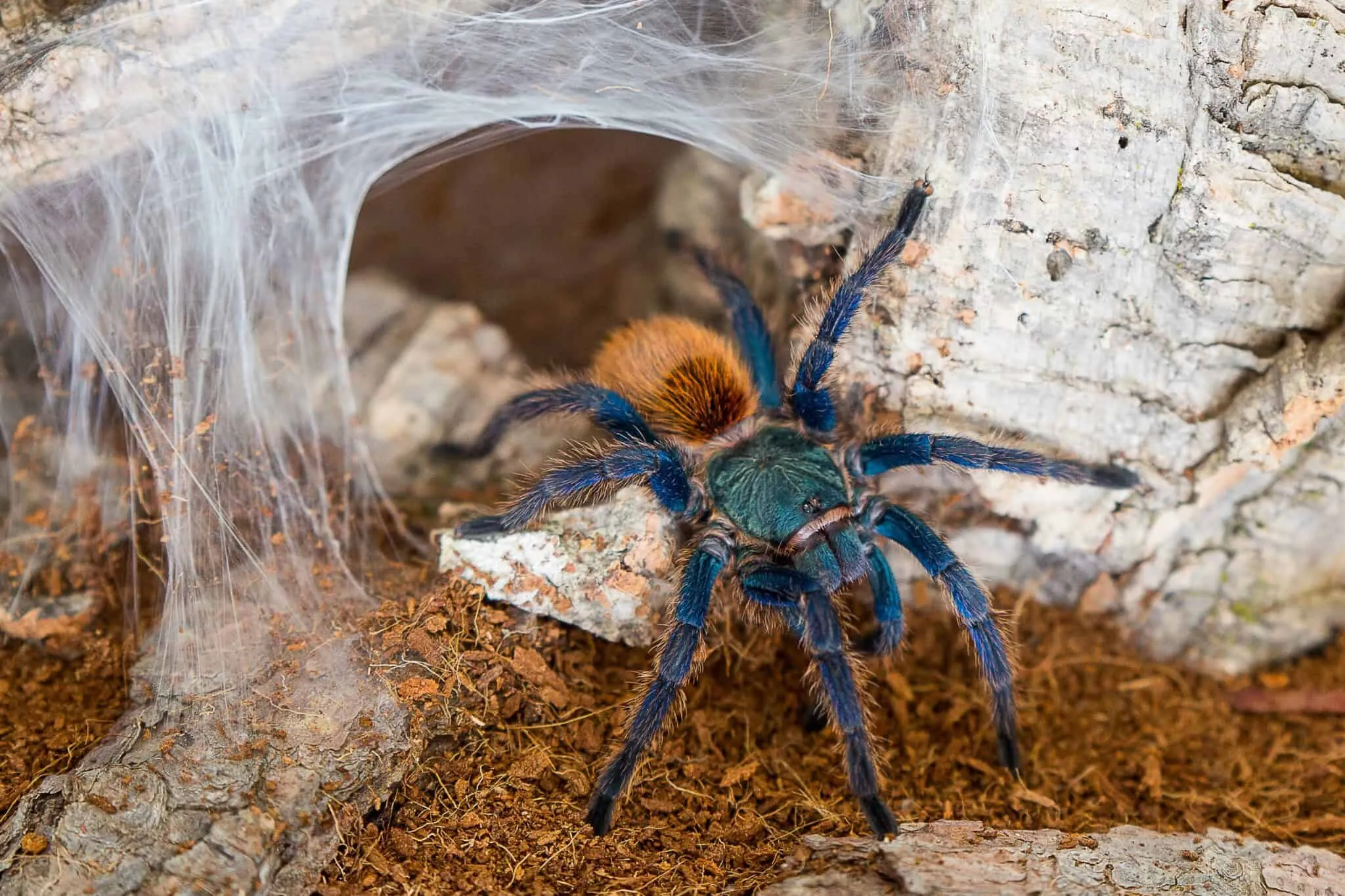
The Brazilian Black Tarantula is generally known for its docile temperament, making them relatively easy to handle, but like other tarantulas, caution should always be exercised. They are less likely to bite, and their calm demeanor makes them a popular choice for experienced keepers. However, they can be skittish and may flick urticating hairs if they feel threatened. It is always recommended to handle them gently, and avoid any sudden movements. It’s also crucial to respect their space and observe them from a safe distance to minimize any stress. (Image: Person handling a Brazilian Black Tarantula)
Care and Habitat
Caring for a Brazilian Black Tarantula involves creating a suitable habitat with the right environmental conditions. They require a terrestrial enclosure with a substrate, such as coconut fiber or peat moss, to allow them to burrow. A hide, such as a piece of cork bark or a hollow log, is essential for providing a sense of security. The temperature should be maintained around 75-85°F (24-29°C), and humidity levels should be moderate, around 60-70%. A shallow water dish should always be available for drinking. Feeding should consist of appropriately sized insects, such as crickets or mealworms, offered once or twice a week, depending on the tarantula’s age and appetite. (Image: Brazilian Black Tarantula habitat)
The Gooty Sapphire Ornamental Tarantula
The Gooty Sapphire Ornamental Tarantula (Poecilotheria metallica) is a visually stunning species, highly prized for its unique coloration and arboreal nature. This tarantula is a true masterpiece of nature, boasting an intricate pattern of metallic blue, silver, and yellow markings. Native to the deciduous forests of India, they are a spectacular species to observe, but they are more suited for experienced keepers due to their potent venom and skittish temperament. (Image: Gooty Sapphire Ornamental Tarantula)
Appearance and Characteristics
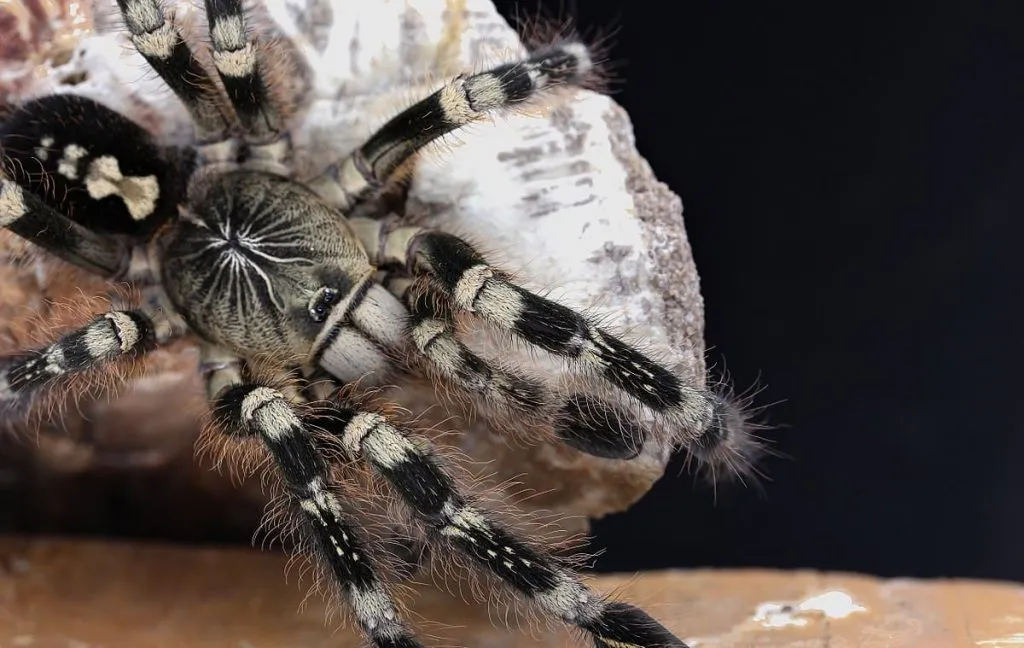
The Gooty Sapphire Ornamental Tarantula is one of the most visually striking tarantula species. Their bodies are adorned with a breathtaking combination of metallic blue, silver, and yellow markings. The legs are a deep blue, with yellow bands at the joints, and the carapace is often a shimmering silver or metallic blue. The abdomen features a unique pattern that adds to their captivating appeal. They are a medium-sized species, with a leg span of up to 7-8 inches. Their beauty is undeniable, and they are considered a true gem in the tarantula world. (Image: Close up of Gooty Sapphire Ornamental Tarantula)
Temperament and Handling
Gooty Sapphire Ornamental Tarantulas are known to be quite skittish and defensive. They have potent venom, and they are not recommended for handling. They are more likely to bite if they feel threatened. It’s crucial to observe them from a safe distance and avoid any unnecessary disturbances. Their arboreal nature means that they are quick and agile. They should only be kept by experienced keepers who understand their specific needs and temperament. (Image: Warning sign for Gooty Sapphire Ornamental Tarantula)
Care and Habitat
Caring for a Gooty Sapphire Ornamental Tarantula involves creating a habitat that caters to their arboreal lifestyle. They require a tall enclosure, as they are climbers. The substrate should be a mix of substrate like coconut fiber and sphagnum moss, and the enclosure should include plenty of climbing structures, such as branches and cork bark, to allow them to climb and create a web. The temperature should be maintained around 75-85°F (24-29°C), and the humidity should be moderate, around 70-80%. A water dish should be available for drinking and misting the enclosure can also help maintain the humidity level. Feeding should consist of appropriately sized insects, such as crickets or roaches, offered once or twice a week. (Image: Gooty Sapphire Ornamental Tarantula habitat)
The Cobalt Blue Tarantula
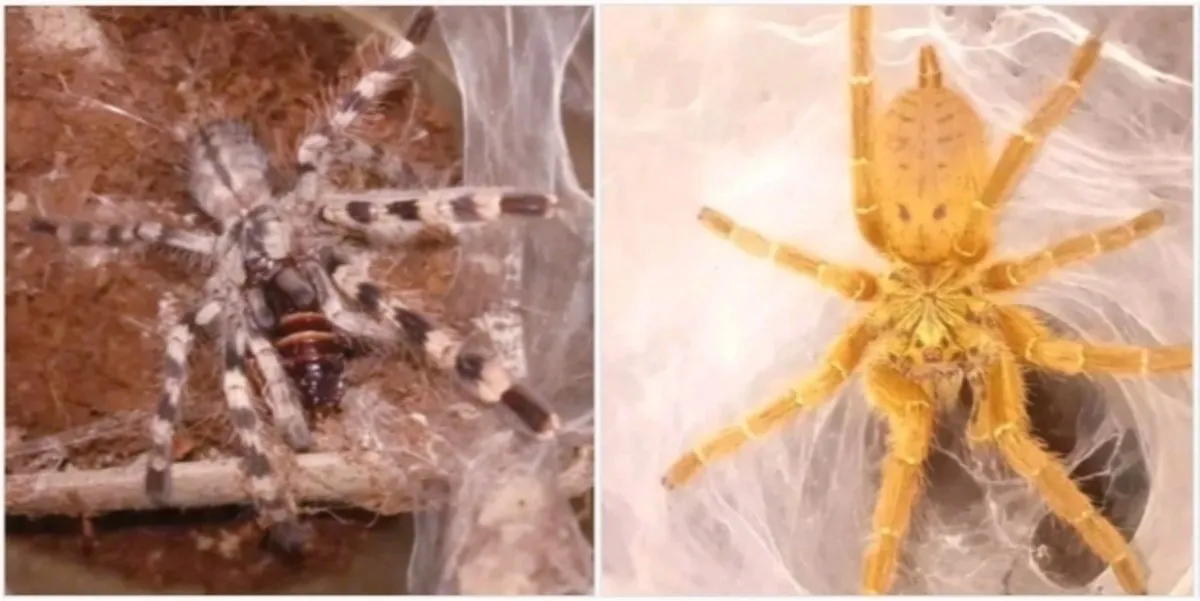
The Cobalt Blue Tarantula (Cyriopagopus lividus) is another visually striking species, known for its vibrant, metallic blue coloration. These tarantulas are a favorite among experienced keepers due to their unique appearance and intriguing behaviors. They are native to the tropical forests of Myanmar and Thailand, and their striking colors make them a standout species in any collection. Their care requirements are relatively moderate, but their temperament and venom require a respectful approach. (Image: Cobalt Blue Tarantula)
Appearance and Characteristics
The Cobalt Blue Tarantula is instantly recognizable by its stunning metallic blue coloration. The legs and carapace exhibit this brilliant blue hue, which contrasts with the black abdomen. The intensity of the blue can vary depending on the individual, but it is consistently a striking feature. They are a medium-sized species, with a leg span of up to 5-6 inches. The visual impact of this tarantula is undeniable, making it one of the most sought-after species in the hobby. (Image: Close up of Cobalt Blue Tarantula)
Temperament and Handling
Cobalt Blue Tarantulas are known for their defensive behaviors and should not be handled. They are quick to bite if they feel threatened, and their venom can be quite potent. They are best observed from a safe distance and should not be disturbed unnecessarily. It’s essential to provide them with a secure and well-established habitat, where they can feel safe and secure. The temperament of these tarantulas makes them more suitable for experienced keepers who can handle their needs. (Image: Cobalt Blue Tarantula warning sign)
Care and Habitat
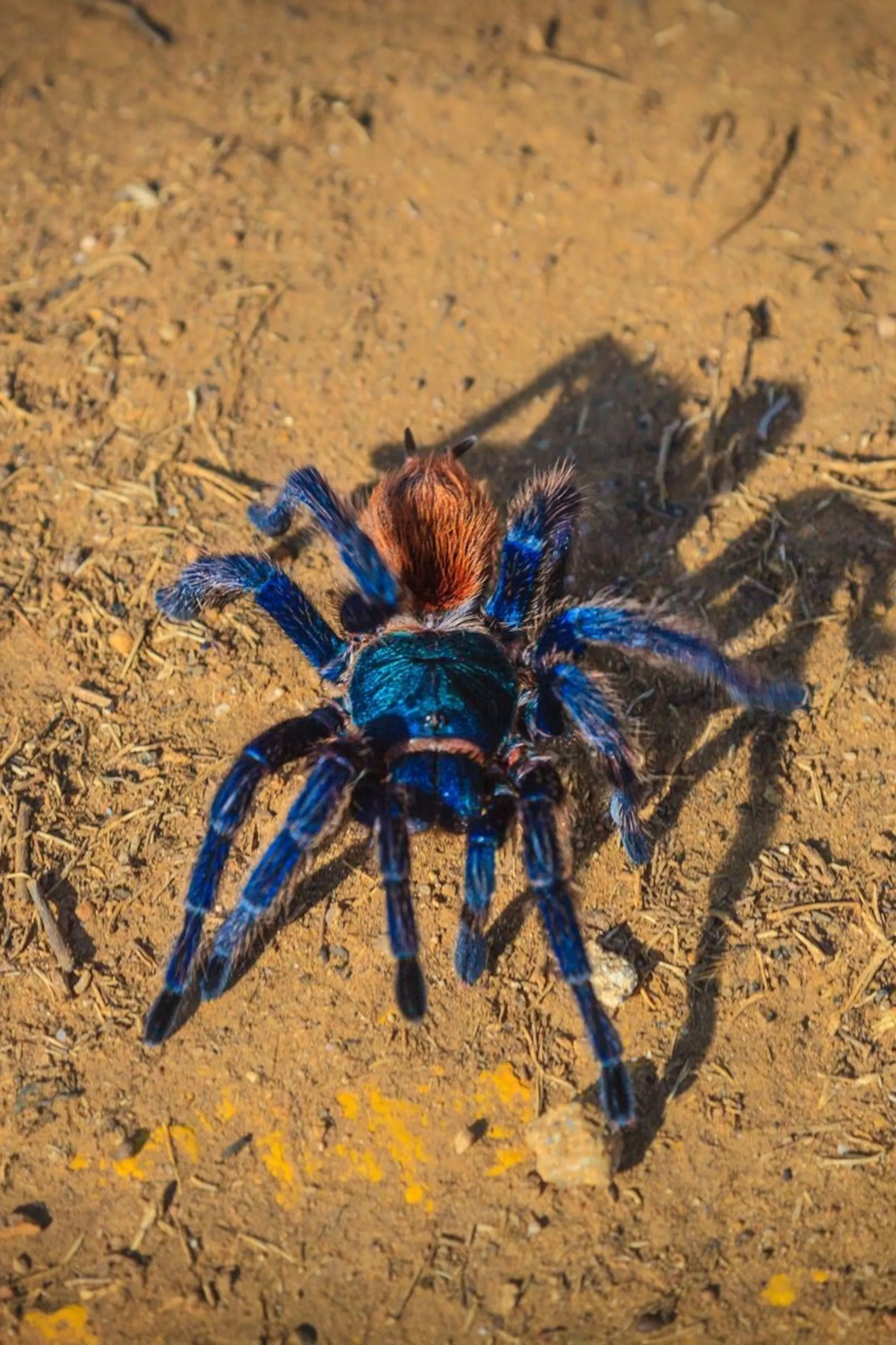
Caring for a Cobalt Blue Tarantula requires providing a suitable terrestrial habitat with specific environmental conditions. They require a moderately humid environment, with a substrate like coconut fiber or peat moss. A hide, such as a piece of cork bark, is essential for providing security. The temperature should be maintained around 75-85°F (24-29°C), and the humidity should be around 70-80%. A water dish should be available for drinking, and the enclosure should be misted regularly to maintain the humidity. Feeding should consist of appropriately sized insects, such as crickets or roaches, offered once or twice a week. (Image: Cobalt Blue Tarantula habitat)
Conclusion
Tarantulas are extraordinary creatures, and the five breeds highlighted in this guide represent some of the most amazing and captivating species. From the gentle Chilean Rose Hair to the stunning Cobalt Blue, each tarantula has its unique characteristics and care requirements. Before getting any tarantula, ensure you have done your research and can provide a suitable environment. By understanding their needs and respecting their behaviors, you can enjoy the fascinating world of these amazing arachnids and provide them with a healthy, thriving environment. Remember to always prioritize the well-being of the animal and enjoy the marvels of the tarantula world! (Image: Tarantula feeding)
